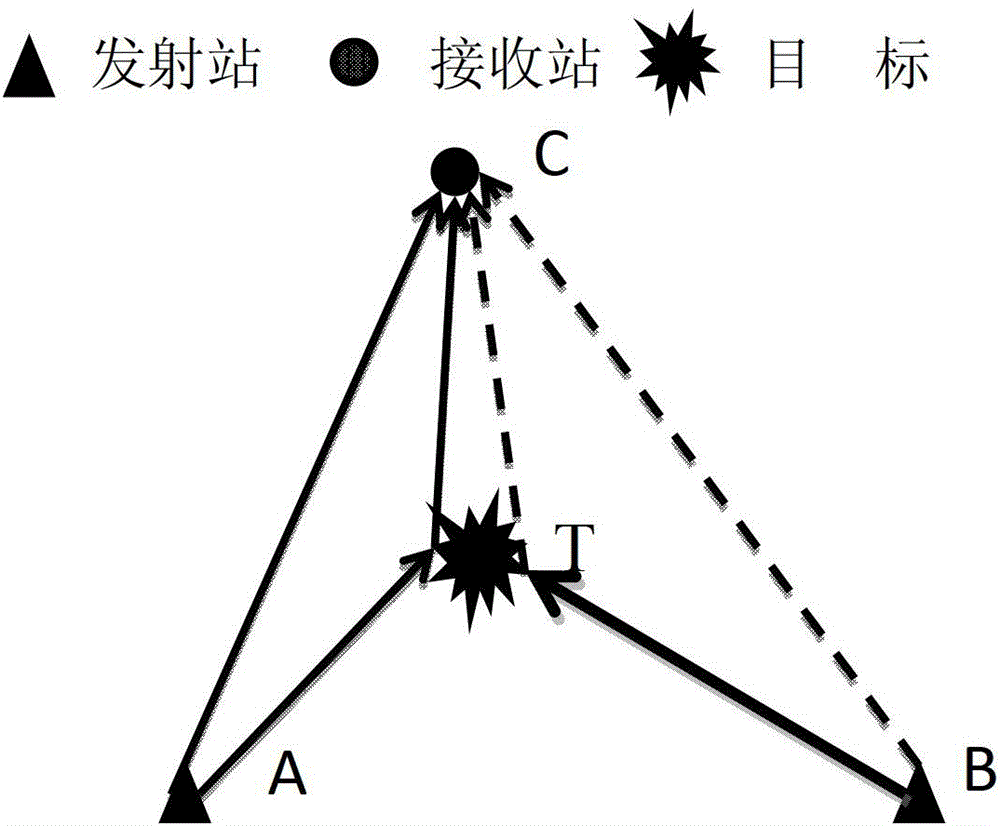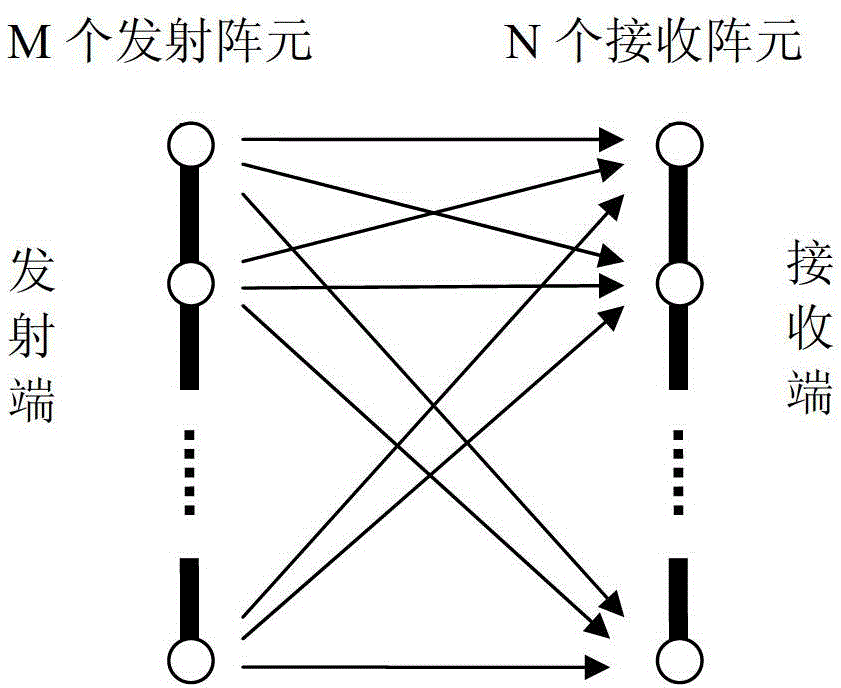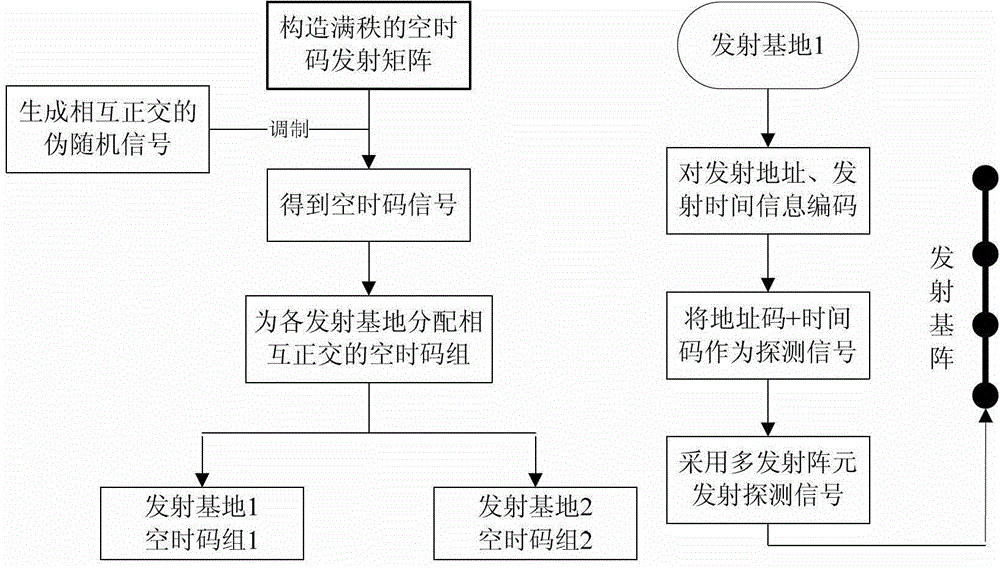Multi-base sonar space-time channel multiplexing method
A channel multiplexing, multi-base technology, applied in multiplexing communication, orthogonal multiplexing systems, electrical components, etc., can solve the problem of limited frequency band resources, complex received signal composition, and impossible to talk about positioning optimization algorithms and other problems to achieve the effect of improving time, efficient reuse, and reducing cross-correlation
- Summary
- Abstract
- Description
- Claims
- Application Information
AI Technical Summary
Problems solved by technology
Method used
Image
Examples
Embodiment Construction
[0025] The present invention will be specifically described below in conjunction with the accompanying drawings.
[0026] A multi-base sonar space-time channel multiplexing method provided by the present invention includes two parts: signal design at the transmitting end and signal processing at the receiving end:
[0027] The transmitting end:
[0028] Step 1. Modulate a full-rank space-time code matrix with mutually orthogonal pseudo-random signals to obtain space-time code signals based on pseudo-random modulation.
[0029] Step 2. Allocate independent and mutually orthogonal space-time code groups for each transmitting end of the multi-base system as a codebook for transmitting signals of each transmitting end.
[0030] Step 3. Encode the transmission address and transmission time of each transmission at the transmitting end, and use the form of address code + time code as the signal structure of the detection signal, and the detection signal is transmitted through the tr...
PUM
 Login to View More
Login to View More Abstract
Description
Claims
Application Information
 Login to View More
Login to View More - R&D
- Intellectual Property
- Life Sciences
- Materials
- Tech Scout
- Unparalleled Data Quality
- Higher Quality Content
- 60% Fewer Hallucinations
Browse by: Latest US Patents, China's latest patents, Technical Efficacy Thesaurus, Application Domain, Technology Topic, Popular Technical Reports.
© 2025 PatSnap. All rights reserved.Legal|Privacy policy|Modern Slavery Act Transparency Statement|Sitemap|About US| Contact US: help@patsnap.com



